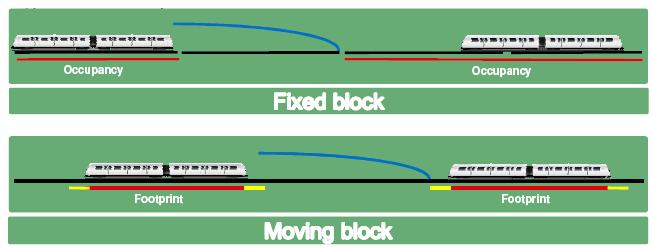From 20th September 2025, the Mumbai Monorail will be suspended for an indefinite period as part of a primary modernization drive. Authorities have announced that the system will be upgraded with an indigenously developed Communications-Based Train Control (CBTC) signaling system, marking a first for India’s monorail network.
The monorail, which has faced frequent breakdowns and low ridership since its launch, is expected to benefit significantly from the CBTC upgrade. The new signaling will enable real-time monitoring, automatic train protection, and shorter headways, making operations safer, more reliable, and more efficient.
In parallel, multiple Mumbai Metro corridors, including the under-construction Line 4 (Green Line), are already adopting CBTC. French manufacturer Alstom is supplying driverless trainsets equipped with the advanced system, aimed at reducing delays and increasing passenger capacity.
Together, these projects signal a significant leap in Mumbai’s urban transport modernization, combining global expertise with homegrown innovation under the Atmanirbhar Bharat initiative. But what is CBTC that is being developed in Hyderabad?
What is CBTC?
At its core, Communications-Based Train Control (CBTC) is an advanced railway signaling system that replaces the limitations of older, track-circuit-based technology. Instead of relying on fixed blocks and signals, CBTC uses continuous, wireless communication between trains and trackside equipment to determine precise train locations in real time.
This matters because in a city like Mumbai, where every second counts, traditional signaling often leaves more distance between trains than necessary, reducing capacity. CBTC, on the other hand, allows trains to safely run closer together, increasing frequency without compromising safety.
Key features of CBTC include:
- High-resolution train tracking – knowing exactly where each train is, not just in broad “blocks.”
- Automatic management of speed, spacing, and routing – reducing human error and delays.
- Scalability from semi-automatic to fully driverless operation – enabling systems like Mumbai Metro’s Line 4 to prepare for driverless services from day one.

In short, CBTC turns conventional rail into an innovative, digital network — one that is more reliable, more efficient, and better suited to the demands of modern urban transport.
Uses of CBTC in the Indian Context
India’s urban transport systems, facing the dual challenge of rapidly growing passenger demand and aging infrastructure, are on the brink of a transformative change. CBTC, uniquely suited to these conditions, is set to revolutionize everyday commuting across Indian metros and the Mumbai Monorail, offering a beacon of hope for a more efficient and reliable public transport system.
- Urban Metros & High-Density Corridors
CBTC is already being deployed in metros such as Delhi, Mumbai, Bengaluru, and Chennai, where trains need to run at high frequency to serve millions of passengers daily. The system ensures that trains operate closer together while maintaining absolute safety, easing rush-hour congestion.
- Capacity Enhancement Without New Tracks
In a land-scarce, high-cost urban environment, building new tracks is often impractical. CBTC increases line capacity simply by reducing headways (the gap between trains), allowing more services on the same infrastructure — an Atmanirbhar, cost-effective solution.
- Reliability and Efficiency
Traditional signaling has been a significant cause of delays, breakdowns, and low confidence in systems like the Mumbai Monorail. With CBTC’s real-time monitoring and automatic train protection, Indian commuters can expect a significant improvement in the reliability and punctuality of their services, instilling a sense of confidence in the future of Indian rail transport.
- Automatic Train Operation (ATO)
CBTC lays the groundwork for driverless or semi-automatic operation, as seen in the upcoming Mumbai Metro Line 4, where driverless Alstom trainsets will set a new benchmark in Indian public transport.
- Energy Efficiency and Sustainability
With India’s cities choking on congestion and pollution, CBTC helps reduce energy wastage by optimizing speed profiles and braking patterns — contributing to green mobility goals.
In the Indian context, therefore, CBTC is not just a signaling system — it is a strategic enabler of urban transformation, balancing safety, capacity, and sustainability while aligning with Atmanirbhar Bharat’s push for self-reliant infrastructure innovation.
CBTC in India: From Global Imports to Atmanirbhar Innovation
India’s CBTC journey began with Hyderabad Metro, the country’s first system to adopt this advanced signaling technology. The project was executed by Larsen & Toubro (L&T) Metro Rail Hyderabad Limited in partnership with the French multinational Thales Group, which supplied its SelTrac CBTC solution. Thales designed and built the system, while L&T managed its execution and integration.
But India’s vision has always gone beyond adoption to self-reliance. At the national level, the Delhi Metro Rail Corporation (DMRC) has partnered with Bharat Electronics Limited (BEL) to develop an indigenous CBTC system (i-CBTC) jointly. This collaboration is part of the “Make in India” and “Atmanirbhar Bharat” initiatives, aiming to cut dependency on foreign suppliers and foster India’s own signaling ecosystem.
- Hyderabad’s Current CBTC: Supplied by Thales, implemented with L&T, representing India’s first operational CBTC system.
- India’s Indigenous CBTC (i-CBTC), developed by BEL and DMRC, is not just a solution for domestic needs. It is designed to be scalable across metros and Indian Railways, with the potential for future export. This marks a significant step towards India setting its own global benchmarks in signaling, instilling a sense of pride and optimism about India’s role in the global rail technology market.
This marks a critical transition: from relying on imported expertise to developing homegrown signaling technologies that can compete globally. The path from Hyderabad’s imported CBTC to the indigenous i-CBTC reflects how India is transforming from a consumer of high-tech systems into a creator of world-class railway solutions, in line with the Atmanirbhar Bharat vision.
The Road Ahead: India’s CBTC Future
India’s rail modernization journey is only accelerating, and CBTC stands at its core. With metro systems expanding across Pune, Nagpur, Lucknow, Ahmedabad, Kochi, and beyond, CBTC is fast becoming the default signaling backbone for new projects, ensuring safer, faster, and more efficient operations.
The next big leap is the rollout of indigenous i-CBTC, developed by BEL and DMRC under the Atmanirbhar Bharat vision. Once proven, this system will not only cut costs and reduce reliance on foreign suppliers but also allow India to set its own global benchmarks in signaling.
CBTC’s role will not be limited to metros. In the future, Indian Railways’ suburban and mainline networks, and even semi-high-speed and high-speed corridors, could benefit from the same technology. By optimizing capacity and safety, CBTC can redefine how millions of Indians travel daily. Its integration into India’s broader transportation strategy is a testament to its potential to revolutionize the country’s transit systems.
Crucially, indigenous CBTC also opens the door for export opportunities. Many developing nations in Asia, Africa, and Latin America are looking for affordable, reliable metro solutions — and India, with its scale and engineering talent, can emerge as a global supplier of signaling technology.
In this sense, CBTC is more than just a signaling upgrade. It is a symbol of India’s transition — from relying on multinational imports in Hyderabad, to building homegrown solutions in Delhi and beyond. It reflects a nation determined to modernize its infrastructure while remaining self-reliant, innovative, and globally competitive.
Every train that runs smarter and safer with CBTC is not just a technological achievement; it is a step towards the future-ready, Atmanirbhar Bharat that India envisions.









